Technical Features
Design options in relation to application.
Perfect protection for guideways on machine tools
Wherever guideways on machines have to be protected, we have a suitable solution. Our guideway protection systems boast a high degree of operational reliability, a long lifetime, and make use of innovative technical solutions.
Today, modern machine tools process workpieces at ever-greater cutting and travel speeds. The protection of guideways, measuring systems, drive elements and other vulnerable parts is absolutely essential.
Accelerations and speeds of machines are constantly increasing. Telescopic covers must also be able to cope with these challenges. This is where telescopic covers with scissor mechanisms are used.
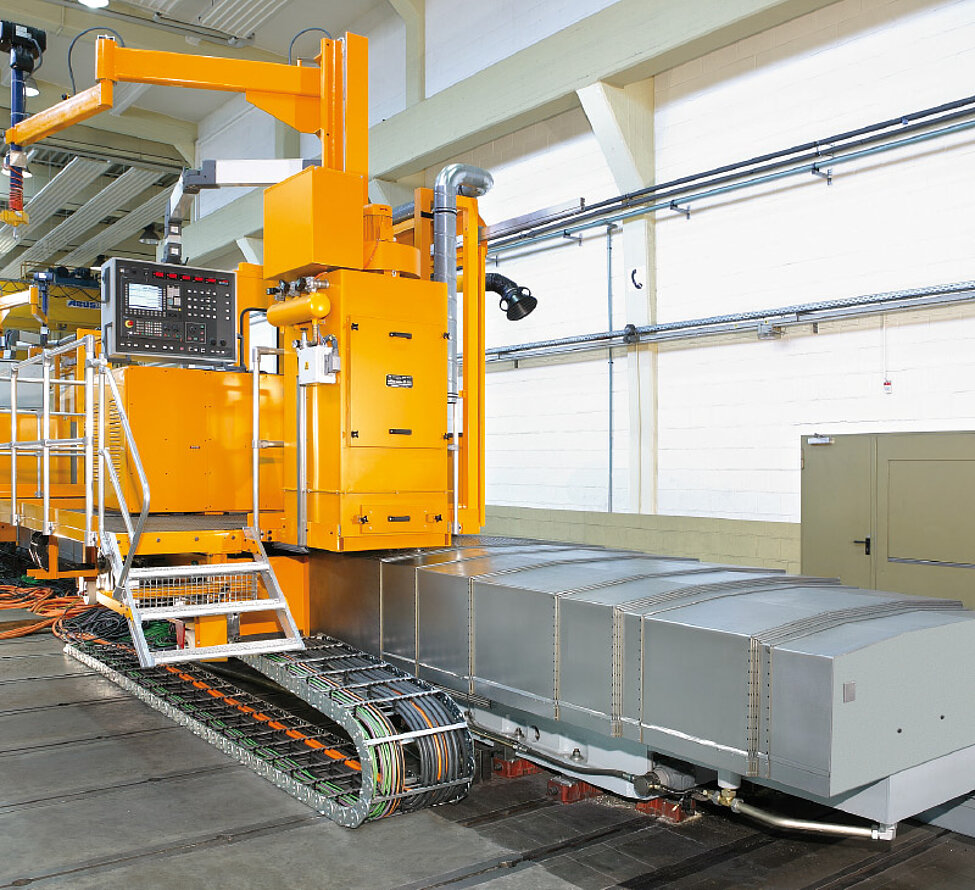
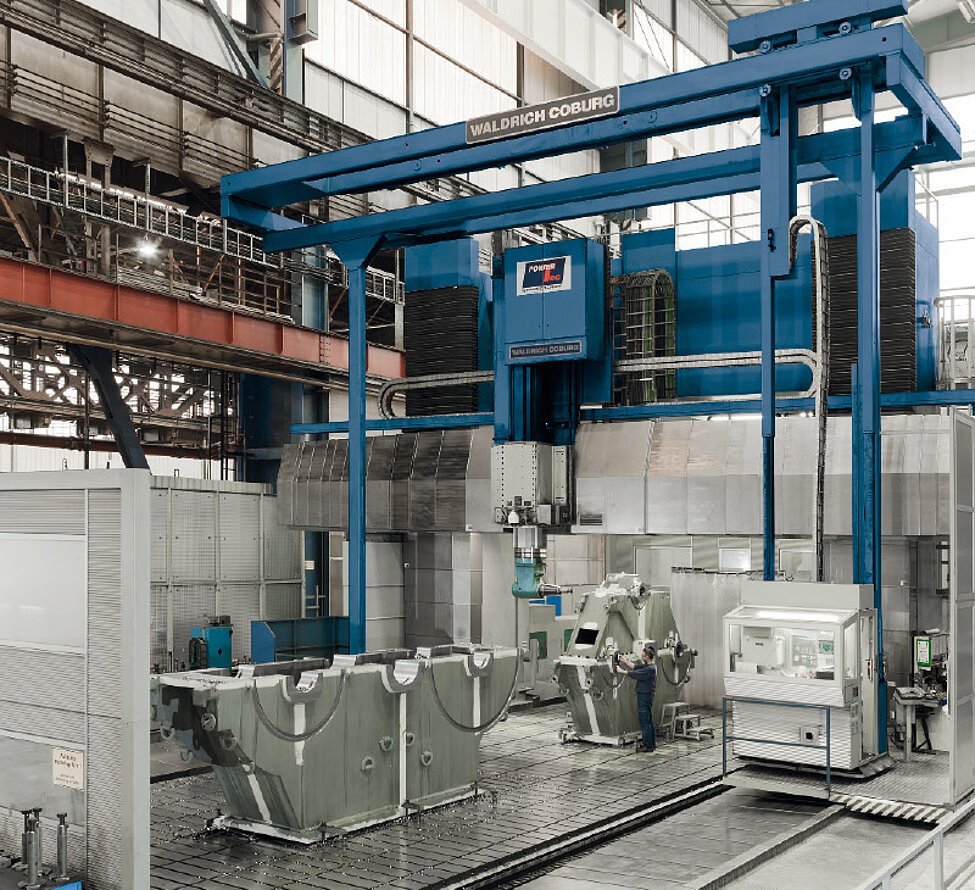
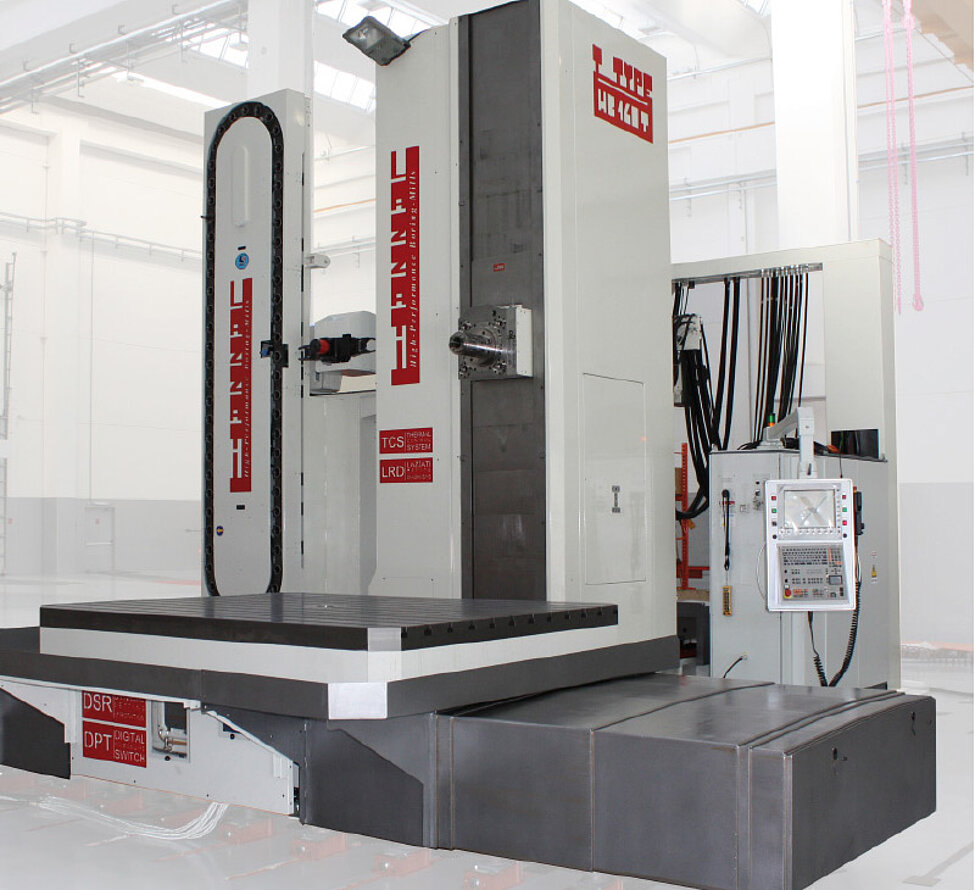
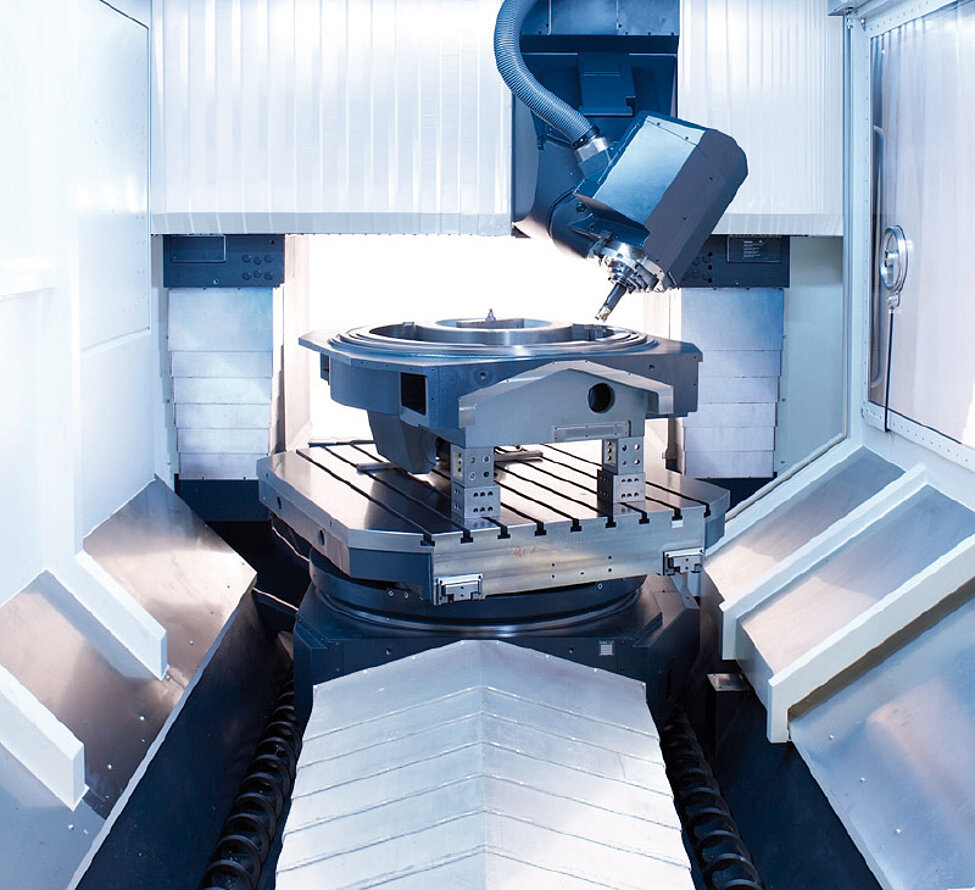
The number of varieties is immense – no cover for a machine is exactly the same as any other.
The speed is decisive
At speeds below 15 m/min a telescopic cover can still be built in the conventional form of box synchronization. At high running speeds the inevitable impact pulses lead to vibrations and clearly audible impact noise.
So-called differential drives serve to synchronize the boxes and eliminate impact pulses. Kabelschlepp has decided on the tried and proven scissor mechanism principle for which special materials are used.
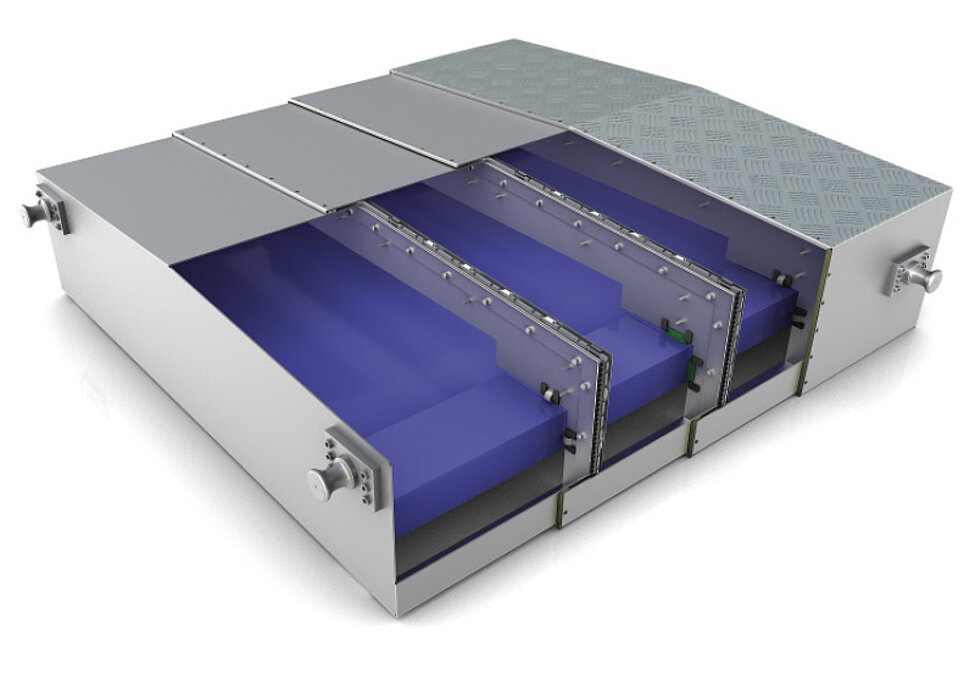
Telescopic cover with damping elements
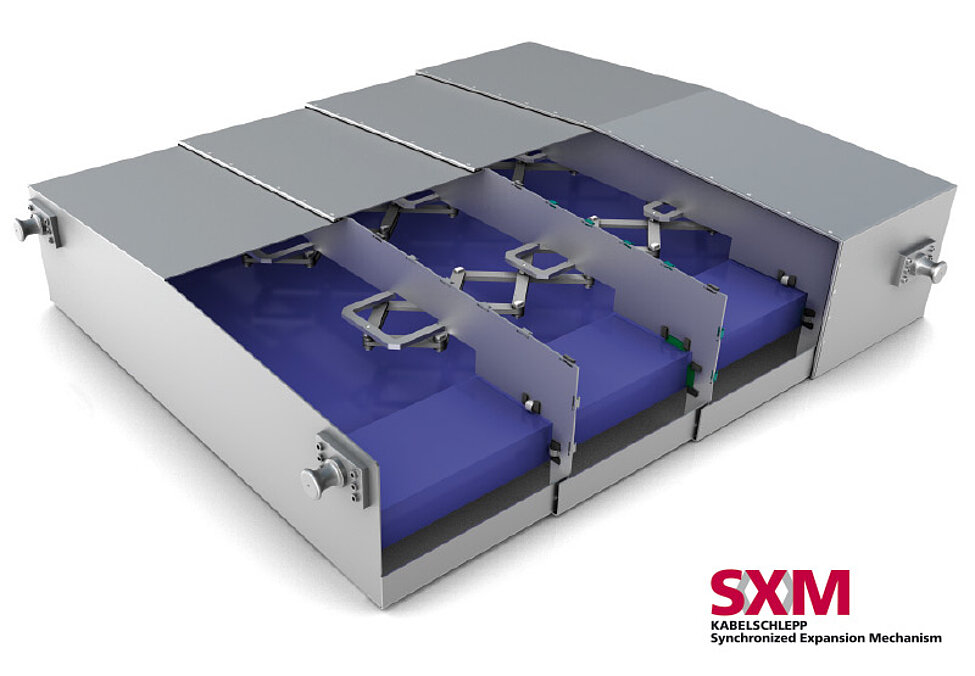
Telescopic cover with scissor mechanism
Telescopic covers with scissor mechanisms have many advantages:
- High travel speeds up to 200 m/min are possible.
- Acceleration forces and speeds are uniformly distributed across all the plates. This also applies to the resultant inertial forces.
- The force peaks that would normally occur when the telescopic covers dashed against each other do not occur.
- The disruptive impact pulse of the boxes is eliminated.
Splash- and hose-proof protection on telescopic covers
Over time cooling emulsion and fine chips can be rinsed in between the boxes and make it over the rear wall into the machinery space that is being protected. In many cases this is undesirable. Machine tools with hydrostatic bearings require “watertight” covers.
In order to catch coolant and chips that make it over the rear wall, a gully is generally installed on the back of the rear wall. This gully allows the fluids to be drained off to the sides.
Gullies for telescopic covers
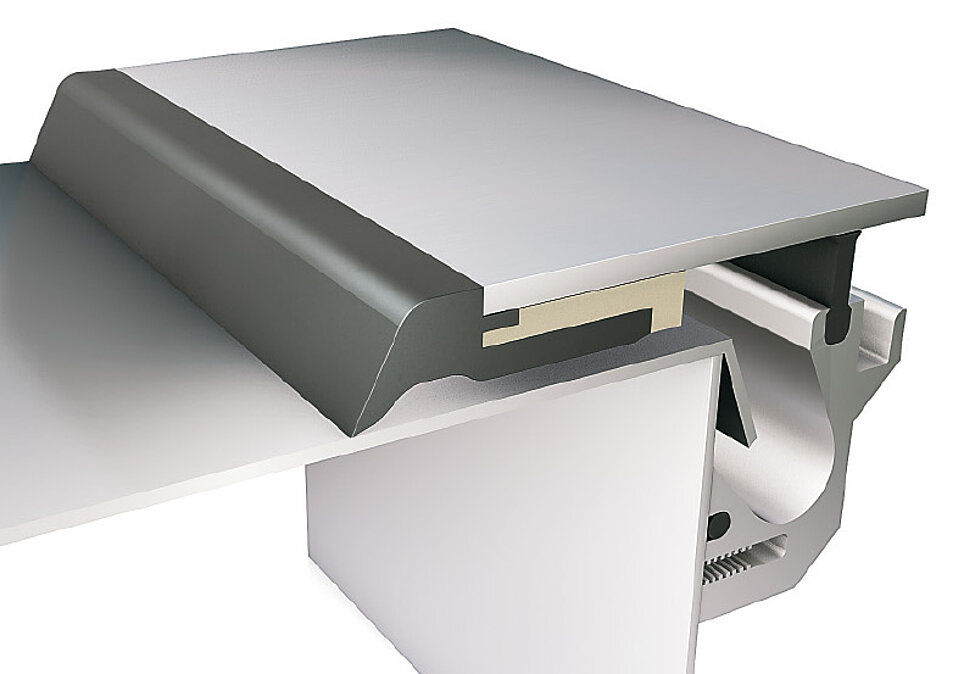
Aluminum gully type AL 19
This gully is an extruded aluminum profile which is screwed onto the rear walls of the cover.
The cover plate is bent downwards so that it projects into the gully. This allows the coolant between the plates to flow into the moulded gully.
Condensation water that forms under the cover plates is wiped off by a lip and drained into gullies to the front and back. This makes it possible to achieve a very high level of waterproofing.
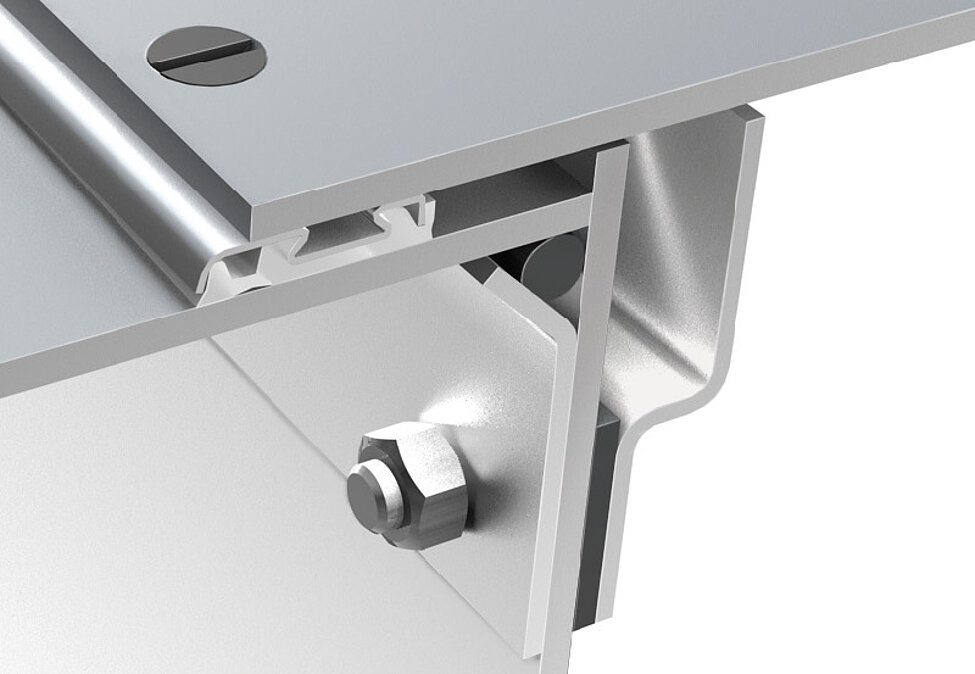
Gully type ST 05
This gully is screwed onto the rear wall. This has the advantage of, among other things, meaning that galvanized metal plates can be used (no welding necessary).
1 Accessories for adaption to the plant

- Extending the guideway
with adjustable consoles ensures optimal utilization of the machining bed. The pushed together telescopic cover is positioned completely or partially on the console. - Ribbed sheet metal adaption
This provides a walk-on possibility with larger bed path covers and therefore achieves simplified machine loading. - Viewing window
For visually inspection of sensitive and inside positioned machinery parts.
Additionally possible:
- Intermediate compartment for receiving and discharging larger quantities of coolant and shavings waste
- Moveable connection on machine table for more difficult connection situations
Telescopic covers in stainless steel
Utilizing stainless steel can make sense depending on the specific application and environmental conditions. KABELSCHLEPP® can always also deliver telescopic covers in stainless steel.
Application-related constructions
Tandem telescopic covers
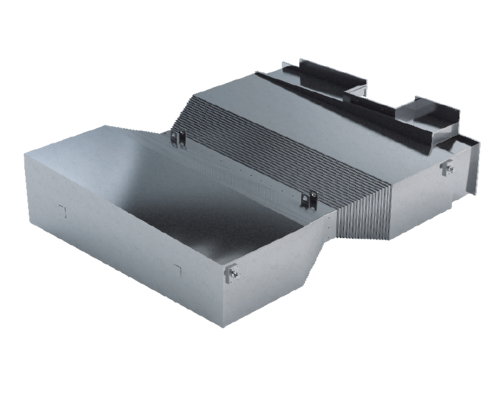
Telescopic covers can also be designed as a tandem system for very large travel lengths. This thereby enables the outer dimensions to be reduced to a minimum compared to the guideways.
Telescopic covers with bellows
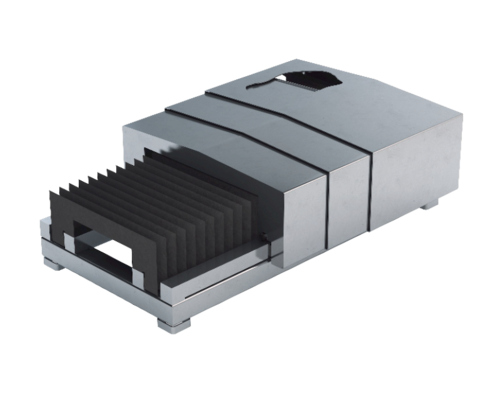
The highest possible leak tightness is often the main requirement for a telescopic cover to be used when machine has hydrostatic guides. These requirements are complied with by integrating bellows. The bellows can be installed between the individual compartments or continuously under the telescopic cover.
Blind telescopic covers
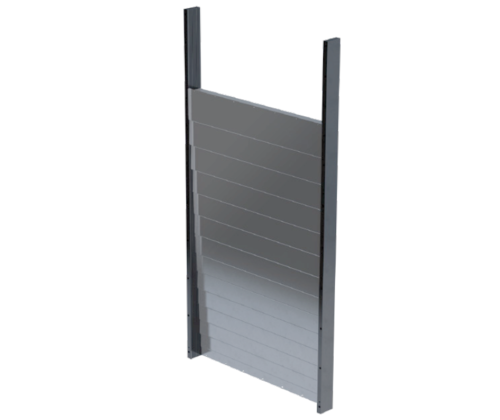
Blind telescopic covers consist of smooth cover sheets which are guided in so-called tie down teeth and therefore do not require a direct connection to the guideway. Blind telescopic covers are usually used as rear wall covers within tooling machines. The tie down teeth can be made of various materials.